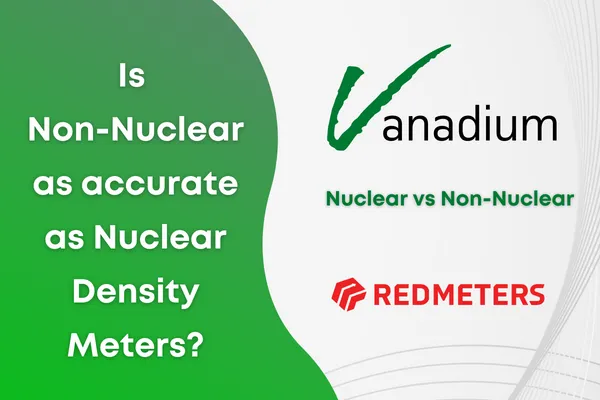

Is Non-nuclear as accurate as Nuclear Density Meters?
A recent evaluation was conducted to determine the correlation, accuracy, and precision of a Red Meter and a Nuclear Density Meter when used in series within a mining operation. The evaluation period lasted for approximately 60 days, during which the mining operation itself was halted on multiple occasions as per normal operations, but neither instrument was serviced, recalibrated or removed from operation.

The primary objectives of the evaluation were to monitor the performance of both instruments over an extended period of time in varying process conditions, and to calculate the mean and standard deviation from the real-time data reported by the RM4. Additionally, the evaluation aimed to compare the Red Meter data with the mean and standard deviation calculated from the data generated by the Nuclear Density Meter, and to draw conclusions with respect to the precision, accuracy, and repeatability of each method. Furthermore, the evaluation aimed to note any additional observations regarding the utility of each device.
To conduct the evaluation, a typical production process line within a typical mining operation was used. The apparatus and specific tools and preparations employed included pressure gauges, flow meters and other typical process control devices. All critical components in the system were calibrated at the beginning of the evaluation period, and the Red Meter and Nuclear Density Meter were both installed in an ambient environment. The instruments were fully anchored and calibrated, with the Red Meter installed in series with the already installed Nuclear Density Meter. The operational line pressure was recorded at 242+8psig, and all operators were fitted with necessary safety equipment as per the mining company's regulations
Three sections of the mining production process were examined during the evaluation, each representing different sets of process conditions, in order to assess the ability of each instrument to adapt to changing process variations. To maximize the accuracy of the test, each section analyzed constituted at least 20 hours of continuous operation. The Red Meter acquires data at a rate of 3 readings per second, 20 hours of operation equates to more than 210,000 recorded data points. The total number of data points captured over the course of the study exceeded 750,000.
Statistical analysis was conducted on both sets of data in order to determine the level of correlation between the instruments. The results showed a high level of correlation between the Red Meter and Nuclear Density Meter, with the specific gravity measurement results shown in Figure 2. The plot generated showed that the Red Meter (Red) and the Nuclear Density Meter (Blue) had very similar results, indicating that both instruments were accurate and precise in their measurement of specific gravity.
In conclusion, the evaluation of the Red Meter and Nuclear Density Meter in this mining operation was successful in determining the correlation, accuracy and precision of these instruments when used in series. These instruments were found to be useful in monitoring and controlling process conditions in the mining industry.
Further Resources :
Download the full article here : <insert hosted link>
Want to know more about the Red Meter? Check our website here : https://www.vanadiumgroup.com.au/redmeter
